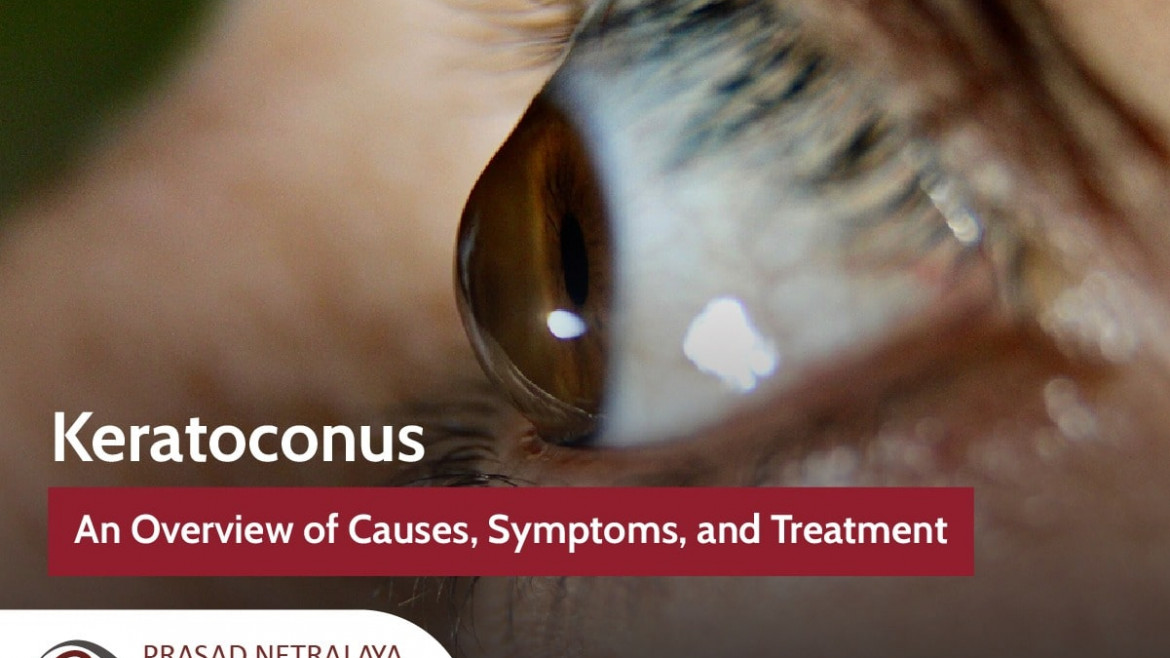Keratoconus (ker-uh-toe-KOH-nus) is not an easy name to remember. You’ve most likely come here to learn more about this condition either because you or someone you know has been diagnosed with it.
Your mind might be flooding with questions like: can Keratoconus be cured? Will keratoconus lead to blindness? What kind of treatment is used to correct keratoconus? etc. Well, fret not. In this blog post, we go over the causes, symptoms and stages of keratoconus to help you understand this condition better.
Let’s begin with the most basic of all questions
Table of Contents
What is Keratoconus?
Keratoconus is a rare corneal condition wherein the central or paracentral cornea thins and steepens with time, causing uneven astigmatism.
In simple words, keratoconus is a progressive eye disease that causes the typically spherical cornea to thin and protrude into a cone shape. It can result in significant vision distortion, nearsightedness, irregular astigmatism, multiple image ghosting, glare, and light sensitivity.
Causes of Keratoconus
Although the specific cause of Keratoconus is unknown, environmental and genetic factors are thought to play a role in the development of this eye disorder. Keratoconus can also be inherited in some cases.
The reasons for keratoconus might be hard to pinpoint but several risk factors are linked to it. Some of these include
- Eye rubbing
- Sleep apnea
- Ageing
- Chronic eye Inflammation
- Positive family history
- Other conditions like:
- Connective tissue disorders
- Floppy eyelid syndrome
- Retinitis pigmentosa
- Down syndrome
Symptoms of Keratoconus
Many people with Keratoconus are often unaware that they have it. The first indication is a slight blurring of vision or gradually worsening eyesight that is difficult to rectify.
The signs and symptoms of the different stages of keratoconus may alter. Some common symptoms include:
- Halos and glare around lights
- Poor night vision
- Eye irritation or headaches caused by eye pain
- Sensitivity to bright lights
- Vision deterioration or clouding that occurs suddenly
Treatment for Keratoconus
Keratoconus eye treatment focuses on two aspects. The first is to stop the progression of the condition, and the second is to examine the refractive error and provide support to improve the impaired vision.
The method of treatment depends on the stage at which the condition is diagnosed.
- Early-stage treatment includes glasses to treat nearsightedness and astigmatism. As it progresses, you might have to switch to wearing hard contact lenses.
- Intermediate stage treatment includes a procedure called corneal collagen cross-linking.
This is a one-time, in-office procedure that involves the application of a vitamin B solution to the eye, which is subsequently activated for about 30 minutes or less using ultraviolet radiation. Although the solution does not restore the keratoconus cornea to the normal state, it results in the formation of new collagen bonds, which restore and maintain some of the cornea’s strength and shape.
- Advanced stage treatment includes adding a corneal ring or a complete corneal transplant.
- Keratoconus corneal ring (Intacs): Corneal ring implantation is a medical treatment that involves putting a ’C’ shaped plastic ring into your cornea’s middle layer. This helps flatten the surface of the cornea, allowing improved vision. This is a short procedure and it takes roughly 15-30 minutes to complete.
- Keratoconus cornea transplant: A donor cornea replaces the patient’s damaged cornea in a corneal transplant. This procedure takes around an hour to complete.
Consult the best ophthalmologists in coastal Karnataka at Prasad Netralaya, if you or someone you know has been diagnosed with keratoconus. If you would like a second opinion on a treatment plan or just want to understand more about your condition, book an appointment online or call us at +91 9513596565. We are also available for teleconsultation if you wish to get a consultation from the comfort of your home.
Dr. Vikram Jain, M.S. had his medical training (MBBS) from Kasturba Medical College, Mangalore, India. He did his master’s in Ophthalmic surgery from Kasturba Medical College, Manipal. He currently manages the Glaucoma department of Prasad Netralaya hospital.



